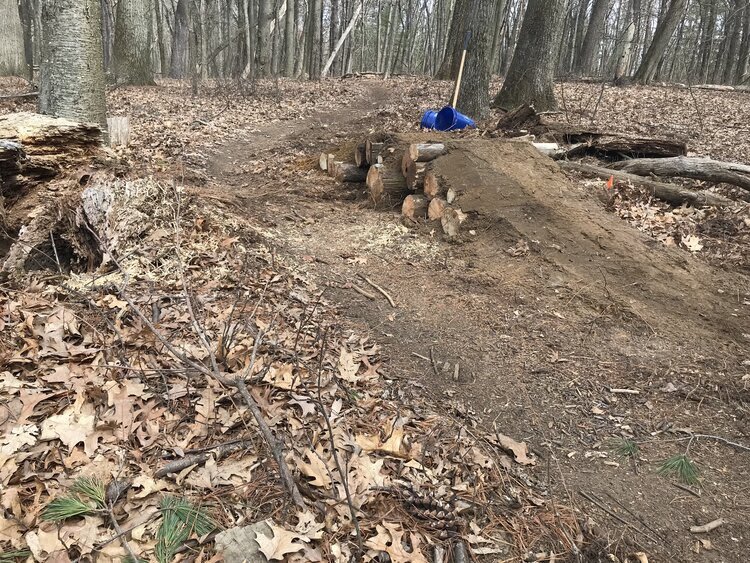How Are Mountain Bike Trails Made?
While some mountain biking trails were originally hiking trails, service-vehicle roads, or even animal paths, others were carefully engineered to maximize mountain-biking enjoyment and minimize negative environmental impact. Mountain bike trail building can involve private companies, nonprofit organizations like the International Mountain Biking Association (IMBA), local municipalities, and/or people like us who just really love riding.
How Are Trails Maintained?
Most of our favorite mountain trails require days or weeks of maintenance every year to improve rideability, enjoyment, and—most importantly—safety. Trail maintenance can include clearing weeds, trimming potentially dangerous tree branches, raking non-feature rocks from trails, sawing and removing fallen trees from paths, repairing ruts, fixing signs, re-painting lines and arrows, and rerouting trails to avoid problem areas. All of these efforts can significantly improve the quality of a ride.
How Can I Help?
While some trails are maintained by private companies or the forest service, others are maintained primarily by the efforts of community volunteers. There are many ways you can help.
Time: Join a local mountain-biking club or trail foundation. In addition, popular mountain-biking regions often have meetup groups dedicated to trail building and maintenance. Many groups post trail-service events. Search for groups in your area, call your local forest service, check with university outdoor recreation centers, and ask for suggestions at bike shops. Some foundations offer gifts, group rides, community events, and other perks for members.
Mountain Trails Foundation (Park City)
South Summit Trails Foundation (Kamas)
Basin Recreation (Park City)
South Summit Trails Foundation (Kamas)
Pinebrook Master Association (Park City)
Wasatch Trails Foundation (Heber City)
Bonneville Shoreline Trail (Salt Lake City)
Salt Lake Trails Society (Salt Lake City)
Trails Utah (Salt Lake)
Herriman Hills Trail Alliance (Herriman)
Lake Mountain Trails Association (Eagle Mountain)
Corner Canyons Trails Foundation (Draper)
Hobble Creek Bicycle Association (Springville)
Utah Valley Trails Alliance (Orem)
Friends of Four Bay (Payson)
Farmington Trails Committee (Farmington)
Ogden Bike Park (Ogden)
Cottonwood Canyon Foundation (Alta)
Moab Trails Alliance (Moab)
Moab Trail Mix (Moab)
Northeastern Utah Mountain Bikers (Vernal)
Bridger Bike Park Club (Logan)
Cache Trails Alliance (Logan)
Price Area Single Track Society (Price)
Mecca Mountain Bike Club (San Rafael Swell)
Richfield City Trails (Richfield)
Iron Trailcraft (Cedar City)
Trail Association of Southern Utah (St. George)
Kanab Cycling Club (Kanab)
Trail Building
Check out Pink Bike’s comprehensive lists of trail groups in your area.
Advocacy: Another great way to help mountain-biking trails remain well maintained and accessible is to become a local mountain-biking advocate. Stay abreast of current mountain-biking issues, show up to relevant city council meetings, and let your local and state representatives know that you support both advancing mountain-biking opportunities and protecting public lands. Access to healthy recreation helps promote happy communities.
Money: Strapped for time? Donate to your favorite trail-building foundation! Most of the organizations listed above have links for donations.
In addition to the ideas discussed above, riders can be good trail stewards on every trail. Pick up garbage you encounter, use good trail etiquette, and always practice Leave No Trace principles. Taking care of the trails we love will help ensure that we can enjoy them for years to come.

